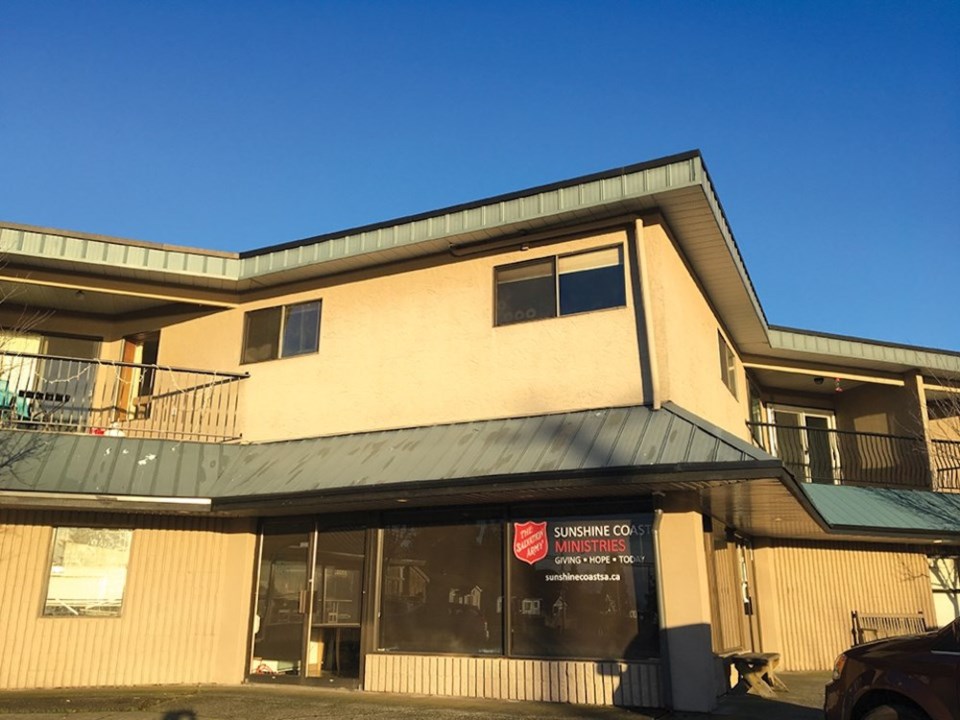The third “point in time” homeless count on the lower Sunshine Coast happens March 3.
Events and outreach
A count outreach event that was planned for Pender Harbour was cancelled because of a scheduling conflict. Local count facilitator Rodney Rissanen said although that was disappointing, two other magnet events, designed to encourage those who are experiencing homelessness to be included in the count are still a go.
At the Salvation Army’s site at 682 Gibsons Way, from 9 a.m. to 1 p.m., those who are unconventionally housed are invited to stop in for a meal featuring roast beef. In Sechelt, between 10 a.m. and 4 p.m., a free midday barbecue meal happens at Sechelt Food Bank located at 5657 Lamprey Lane. Count input forms and representatives of groups that offer services to people experiencing homelessness will be available at both events.
On March 3, a count volunteer will visit Sechelt’s Arrowhead Centre to make it easier for those in need of housing who frequent that site to be included. Foot patrols around Sechelt and Gibsons by other volunteers have been planned to help ensure those sheltering outdoors are aware of how they can take part. Known locations with homeless encampments outside of the municipal centres, including one that Rissanen referred to as “the lunchroom” near the Roberts Creek mandala, will be visited by volunteers with vehicles that can transport people to a nearby count event.
Like other census projects, information collection must all be done on the count day. Rissanen said that individuals who would rather not attend an event can reach out to him (604-619-9502 or via email [email protected]) and he will arrange to meet with them on count day.
Release of results
The Coast’s last homelessness count was done in March 2020 and in February 2021 project sponsor, the Homelessness Services Association of BC (HSABC) released results that showed 84 people experiencing homelessness. The count in 2018 reported that 57 local individuals were homeless.
“We’re suspecting the numbers are going to be significantly higher now,” said Rissanen. Coast Reporter asked if preliminary estimates on the day’s tally could be released locally. He indicated that was “very unlikely” and said he had been asked that same question by other Coast-based groups.
Local count personnel do the outreach in their areas but only collect the forms, he explained. The paperwork is handed off to an HSABC coordinator. That organization assembles the data from our area’s count as well as provincial counts planned in 19 other communities, which are slated to happen between March and May of this year, including one in Powell River scheduled for March 30.
According to a spokesperson for the province, which budgeted $828,000 to support those 20 counts, preliminary results will be available in the summer, with the full homeless count report available this fall.
What data is collected and why
Along with providing details “on what’s working and what isn’t,” Rissanen said that “the count helps with determining where grants and funding will be allocated.
"It is organized by the province and when they see that the Coast may have experienced higher growth in homelessness for one sector or another, they can allocate the funds accordingly. It's about funding and future projects.”
Rissanen, who served as a volunteer with the local count in 2020, stressed that the details in completed collection forms will not be able to be tracked to any specific respondent and will be kept confidential.
He estimates completing the 27-question form will take about 10 minutes. To avoid double counting, the process starts by asking if the individual has already completed the day’s questionnaire. The remaining questions collect the respondent’s demographic details, as well as information on health conditions, income sources and about experiences with situations like foster care, residential schools, or if they have served in the Canadian Armed Forces. Respondents are also asked about the length of time that they have been unconventionally housed and the age that they were when they first experienced homelessness.
The exercise will help “better understand how people are experiencing homelessness and what has changed since the last counts…it will provide valuable insight into how the past few years — including the COVID-19 pandemic, inflation, the housing crisis — have impacted the unhoused community,” the HSABC website states.
About the local facilitator
Once this project is over Rissanen, a resident of RainCity’s Sechelt supportive housing complex, said he plans to continue being “up to his elbows” volunteering with social outreach programs. He is involved with the Community Action Team, the overdose prevention site, the “Straight to the Point” initiative that collects and properly disposes of discarded needles and the Sechelt Downtown Business Association. Giving back is important to him, he said as someone who transitioned from homelessness to being housed and to working to ensure the extent of the crisis in securing shelter for those in need is understood.


